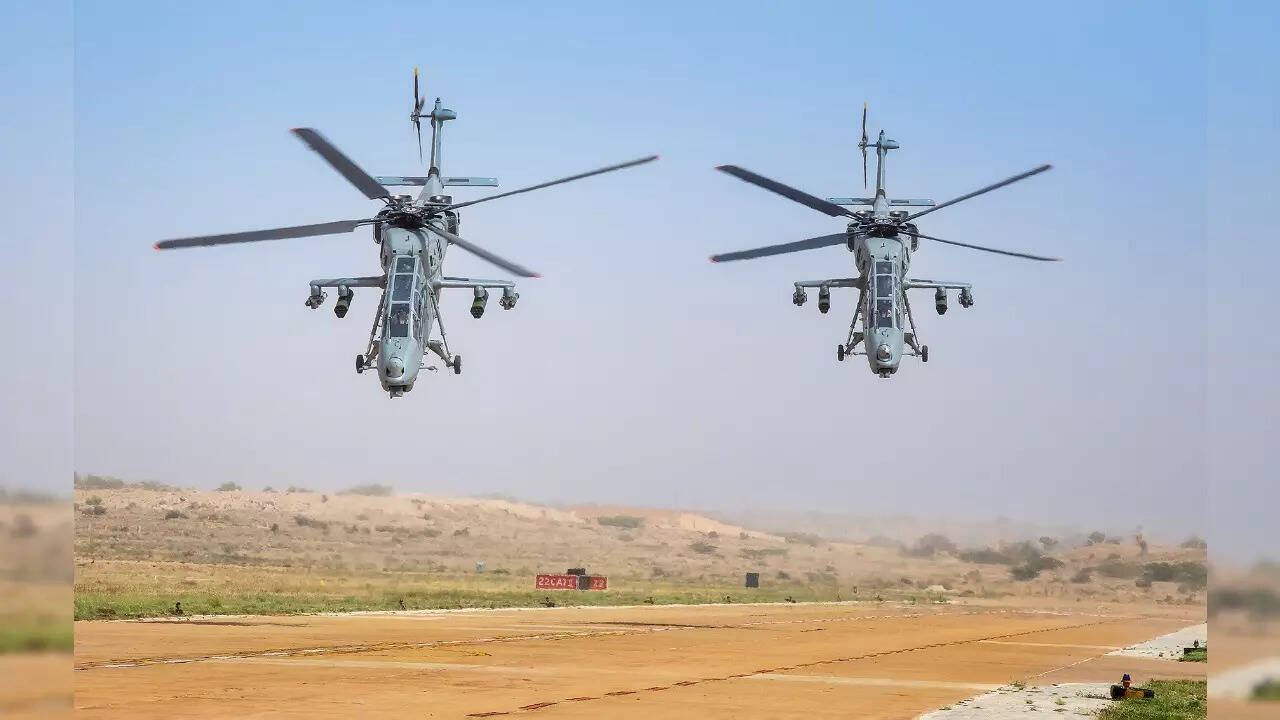'Prachand' is the name of IAF's first made-in-India light combat helicopter : All you need to know about the LCH
Indian Air Force is getting its first indigenously made light combat helicopter (LCH) today (October 3). The induction ceremony is being presided over by Defence Minister Rajnath Singh in Jodhpur, Rajasthan. Developed by state-run aerospace major Hindustan Aeronautics Ltd (HAL), the induction of these helicopters will be a big boost to the IAF’s combat prowess.
"Prachand" is the name of the first indigenously made light combat helicopter (LCH) that has been inducted into the Indian Air Force (IAF) today. The induction event was held in Jodhpur, Rajasthan today (October 3) in the presence of Minister of Defence Rajnath Singh and Chief of Air Staff (CAS) Air Chief Marshal VR Chaudhari.
Making the announcement on Twitter, Defence Minister Rajnath Singh wrote, “I would be in Jodhpur, Rajasthan tomorrow, 3rd October, to attend the Induction ceremony of the first indigenously developed Light Combat Helicopters (LCH). The induction of these helicopters will be a big boost to the IAF’s combat prowess. Looking forward to it.”
The LCH was formally inducted into the Army on September 29. Created to boost the Indian Air Force's combat prowess, the multi-role platform of these LCHs is capable of firing a range of missiles and other weapons. Earlier this year, the Cabinet Committee on Security (CCS) led by Prime Minister Narendra Modi approved the procurement of 15 indigenously developed Limited Series Production (LSP) LCH at a cost of Rs 3,887 crore in March 2022.
Tracing its genesis takes us back to the Kargil war in 1999 when the need was first felt for a lightweight assault helicopter that could be made indigenously for optimal customisation to hold precision strikes in all Indian battlefield scenarios. The Indian battlefield scenarios range from the scorching, arid deserts to freezing mountainous altitudes, from counter-insurgency scenarios to full-scale battle conditions.
The government tasked HAL to develop the LCH after it was sanctioned in October 2006. HAL’s Rotary Wing Research and Development Centre (RWRDC) embarked on the project as it already had the expertise after working on the Advanced Light Helicopter (ALH) Dhruva and its weaponised version ALH Rudra.
A statement by the Ministry of Defense (MoD) says that the LCH is equipped with requisite agility, manoeuvrability, extended range, high altitude performance and around-the-clock, all-weather combat capability to perform roles of Combat Search and Rescue (CSAR), Destruction of Enemy Air Defence (DEAD), Counter Insurgency (CI) operations.
Features
The newly-inducted light combat helicopters have a take-off weight of 5.8 tonnes maximum, and an upper-speed limit of 268 kilometres per hour with a range of 550 kilometres. They have an endurance of over three hours. The maximum density altitude to which they can fly — also known as the service ceiling — is 6.5 kilometres.
The LCHs have a significantly crash-proof structure and landing gear. They have radar-absorbing material to lower radar signatures, making them ideal for stealth missions. The LCHs have a countermeasure dispensing system (CDS) which protects them from the enemy missiles’ infrared seekers.

Photo : Twitter
The LCHs are equipped with a pressurised cabin which is well equipped to protect it in the events of nuclear, biological and chemical (NBC) contingencies. Their quiver is equipped with an extensive weapon system onboard including a 20 mm turret gun, 70 mm rockets and air-to-air missile systems.
These features make them ideal for counter-insurgency warfare, combat roles, combat search and rescue, destruction of enemy air defence, and anti-tank and counter-surface force operations.
Trending:
End of Article
Subscribe to our daily Newsletter!





Related News





Tech Layoffs 2024: Experts Explain Why The Tech Industry Is Most Affected

Who Built NASA's James Webb Space Telescope?

Explained: What Is 60% Kannada Rule That Saw Violent Protests In Bengaluru

Disease X Versus COVID-19: What Are Similarities And Difference Between Two

Are We Prepared to Deal with Disease X?









